SULTAN WINES, TRADITION AND INNOVATION

Photo Source: Rosario Sultana
When I taste a wine I try to get rid of all prejudices. Otherwise in a bottle labeled as
Barolo, even the poorest wine in the world would seem to me better than it is ... I try to concentrate only on what I'm trying to drink. Given the right combination with food and regardless of the funambolic terminology of winemakers and sommeliers, for me, a wine must be good. And I apologize for the alleged obviousness ...
The use of chemical escamotage (which are not necessarily synonymous with harmful) in order to correct some defects have over the past decades standardized the taste of wine, so much so that even with very different grape quality you end up getting a very similar wine. Today we tend to better enhance the characteristics of the vines, for example by reducing the aging time of the wine in
barrique (the small oak barrel that gives the wine the typical aftertaste of vanilla) or by adopting alternative systems , such as steel silos, to minimize the alteration of the original taste.

The last frontier of modern enology is the production of wine from
organic farming or similar, in order to obtain a more natural
wine, although it may make sense to define
natural a wine.
The wine is more likely a work of art, in the literal sense of expression, from the choice of the method of vine breeding, to the pruning, to the type of pressure applied to the pressing of the grapes, to the techniques vinification used. Of not manipulable, therefore natural, perhaps there is only solar radiation (even if in Canada since 2016 it has begun to plant vineyards under a greenhouse). Net of what the new wine labeling as organic, biodynamic, natural, vegan can be pure marketing choices winking at the ethical and health trends of recent times, there are no discounts: a wine, I repeat, must be good. Well, alternative production methods are used if the results obtained are equal or superior to traditional methods. However, labeling a wine as organic does not justify oxidation: an oxidized wine is still an undrinkable wine.
 Vini Sultana
Vini Sultana is a relatively young company but
that has the roots of the culture of the vine in the nineteenth century, which makes the belief of tradition and innovation its own belief. It produces a refined, recognizable wine, an authentic expression of the territory in which the company vineyards are cultivated.
Vini Sultana can reduce the interventionist techniques on the winemaking process to the essentials as she finds herself working with a
raw material of excellent quality, to which she dedicates important attention during the year. For every single vine the necessary care and the right time are reserved to obtain bunches of grapes from the optimal quality:
the production of wine starts from the vineyard...
The vineyards of Nero d'Avola and Syrah of
Vini Sultana fall into the territory of Pachino and the netino, ie in the areas referring to the DOC Eloro, DOC Noto and DOP Noto. The two vines are vinified in red and rosé. Recommended bottle? Take a
Bachynum with bottle aging of at least a couple of years, combine a dinner with strong flavors and let me know...
The
Vini Sultana model is to be considered a sort of third way compared to the massifying policy of commercial production from standardized wine and ideological extremities with dubious results, as it has succeeded in combining its ethical, ecological and dedication to the earth handed down for generations, with the
technological innovation, continuing to invest you. The result? An authentic wine, original and genuine but good, so good.
 Pachino is a land dedicated to wine since man has memory
Pachino is a land dedicated to wine since man has memory. Here Nero d'Avola, probably a native vine, is often cultivated still in alberello, that is to say the way it was bred by the Greek colonizers from the 8th century BC, exactly as in the small vineyard of our Agricamping Sophia. In the nineteenth century, the
Nero d'Avola was marketed as Calabrese wine, as the wine from Calabria was more familiar and known to the French who bought lots of it to give body to their wines. From this practice it seems to derive its current name, ie the dialectization of the Calabrian word in
calavrisi or
calaulisi, then retranslated in
calea (archaic synonym of grapes, in Sicilian)
aulisi, ie
Grapes of Avola, which then became Nero d'Avola because of the intense dark color of the berries. Other theories believe that
Nero d'Avola is the original name, even if one should ask why it was not called Nero di Noto (a city that, historically, has always been more important than Avola ) given that it developed above all from Noto down. Others still consider the name deriving from a Greek island, Calauria, from which it would have been imported.
Even the
Syrah seems to have no clear origin, in fact its origin is lost between Iran and Syracuse. Perhaps autochthonous, perhaps imported from the Phoenicians, the fact is that Syrah derives a wine absolutely complementary to Nero d'Avola, whose blend gives valuable results.
And after so much talking about good wine, I make my famous Horatian verses and I am going to taste a good glass of Bachynum:
nunc est bibendum!
Text Source: Antonino Rampulla
ARCHIVE NEWS
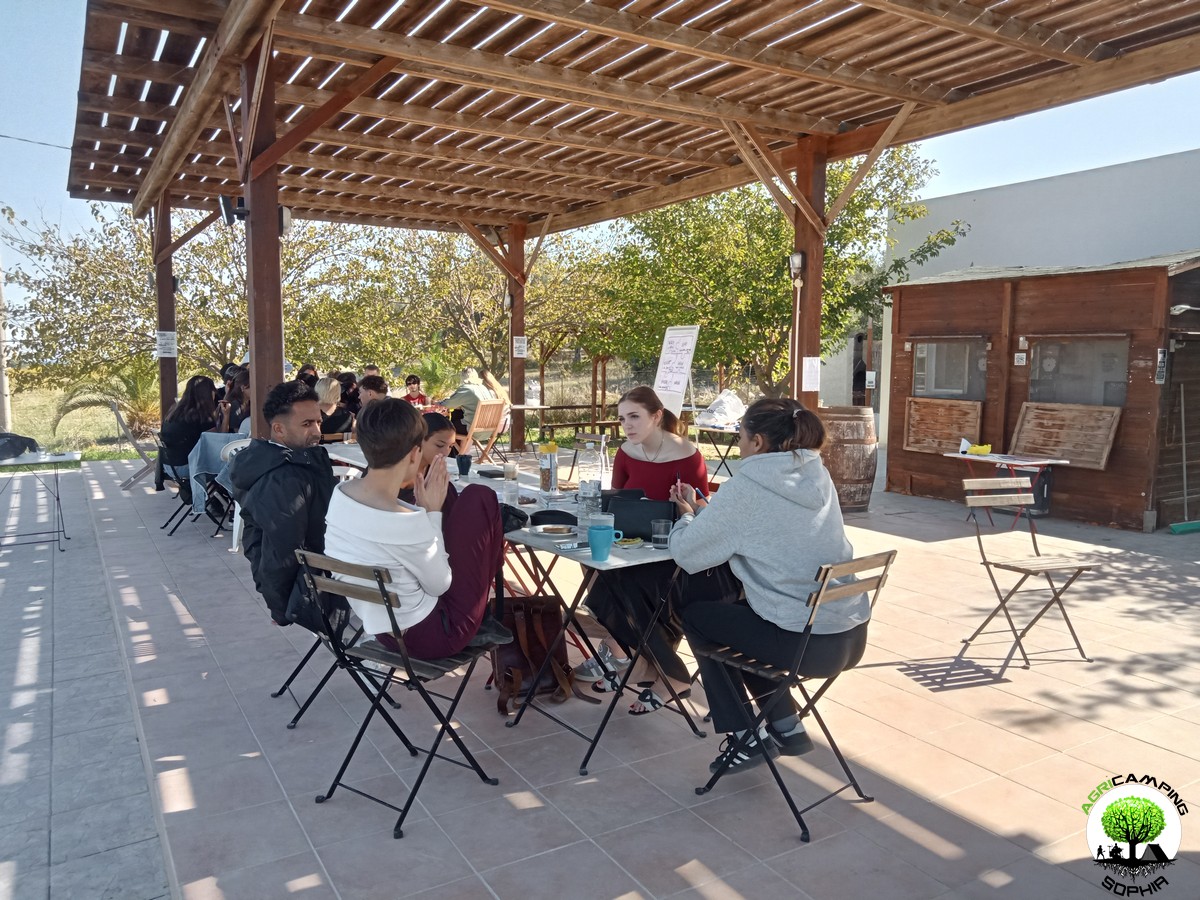 DO YOU WANT TO ORGANIZE AN ERASMUS AT AGRICAMPING SOPHIA?
DO YOU WANT TO ORGANIZE AN ERASMUS AT AGRICAMPING SOPHIA?
WHAT IS AGRICAMPING SOPHIA?
It is a campsite with tent pitches, glamping tents, mobile homes and bungalows
WHERE IS IT?
In Italy, in Sicily, near Syracuse, in Pachino: 36.736883, 15.095610
HOW TO CONTACT US?
info@agricampingsophia.it
(SPEAK ENGLISH) +39 3473079242 – (ONLY SPEAK ITALIAN) +39 3452396095
WHAT DO WE OFFER?
We offer hospitality and catering for Erasmus projects
FOR HOW MANY PEOPLE?
We can have 4-7 single beds in the Socrate Bungalow, 6-10 single beds in the Platone Mobile Homes, 4-6 single beds in the Aristotele Mobile Homes, 4 single beds in the Iblone Mobile Homes, 4 single beds in the single beds in the Empedocle Glamping Tents. In total we therefore have 18 comfortable single places or 31 single places with a fair spirit of adaptation.
IN WHICH PERIOD CAN AGRICAMPING SOPHIA BE AVAILABLE?
The most suitable periods to use our services...
 CART RUTS MODELED ON SOFT ROCK?
CART RUTS MODELED ON SOFT ROCK?
Read also RACK OR HOUSING FOR CLOGS?
Some cart ruts from the Targia district, in Syracuse, and most of the cart ruts from Granatari Vecchi, in Rosolini, give the impression of having been impressed, modelled, on a rock that was originally viscous, not entirely solid. As absurd as this hypothesis may seem, especially in Granatari Vecchi, the softness of the shapes and the at least anomalous uniformity of the rock bank, as if it were a concrete casting, which hosts the cart ruts, is unicum compared to the lithic context in the area.
In Targia this phenomenon is less impressive but if we consider the cart ruts essentially cart tracks, therefore furrowed roads indirectly resulting from the repeated passage of carts along the same route, we do not understand why such uniformity and smoothness is present, in the majority of cases, also on the parts not affected by the passage of the...
 RACK OR HOUSING FOR CLOGS?
RACK OR HOUSING FOR CLOGS?
Read also CART RUTS CUT FROM QUARRIES
In the presence of slopes, even slight ones, in some cart ruts in the Targia district, in Syracuse, central holes are found with a diameter of between 30 and 50 centimeters and a depth of 15-20 centimeters, spaced about 50 centimeters apart. Neither the position (they are not exactly in the center of the cart ruts and perfectly aligned with each other), nor the shape appear perfectly regular: either the passage of time and any wear have profoundly modified their original shape or, simply, they have never had a systematic regularity. However, the offset in position between one hole and another is never completely “off-axis”: there is always a portion about twenty centimeters wide that coincides with the same portion of the previous and subsequent hole. The best preserved and most defined holes are found in the cart ruts usually called Scala...
 CART RUTS CUT FROM QUARRIES
CART RUTS CUT FROM QUARRIES
Back to CART RUTS AND A FEW TOO MANY PROJECTIONS
I will skip any preamble, referring to what has already been written regarding the presence of cart ruts in south-eastern Sicily.
The easy academic tendency has been, in most cases concerning cart ruts, to consider them in terms of the latomie, or quarries, with which very often (for example in the cases of the Targia or Pizzuta districts) they share the same territory.
According to this theory, the carraie would have been indirectly created due to the wear of the rock at each passage of carts or sleds loaded with extracted stone blocks. I will not repeat the arguments presented so far in order to demonstrate that this is a theory that has little solid foundations on an in-depth analysis of the cart ruts. However, I will add a piece by demonstrating the implausibility of a connection between them in both chronological and functional...
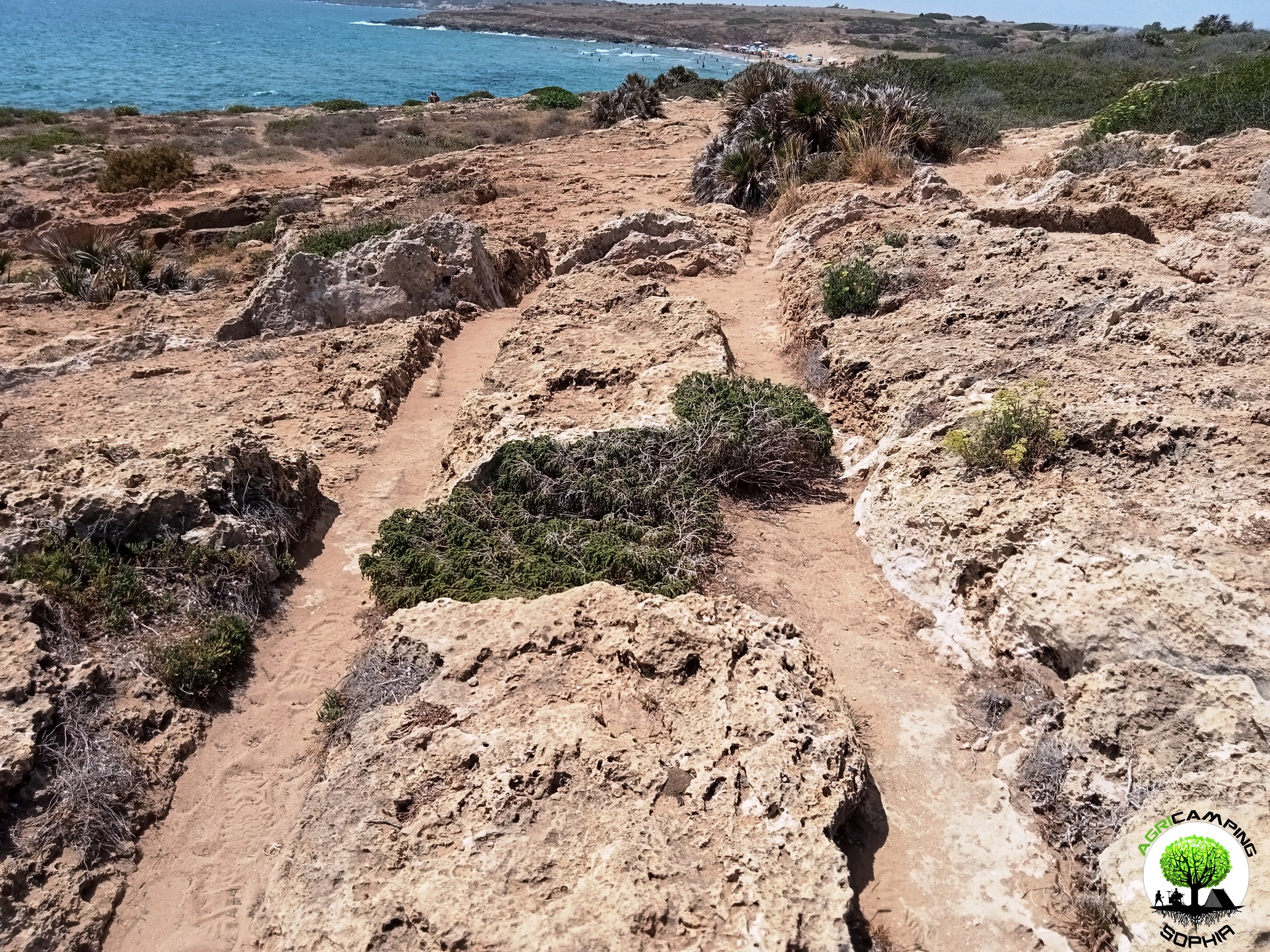 CART RUTS AND A FEW TOO MANY PROJECTIONS
CART RUTS AND A FEW TOO MANY PROJECTIONS
Read also THE POLISHING OF THE CART RUTS
I will skip any preamble, referring to to what has already been written regarding the presence of cart ruts in south-eastern Sicily.Considering the possibility that the cart ruts were gradually dug by the passage of carts pulled by pack animals, for example pairs of oxen, observing certain sections of the cart ruts present in the Granatari Vecchi district, in Rosolini, and in the Pizzuta district, close to the Vendicari Reserve, two questions arise:
1. Why force the animals to pass over rough surfaces and protrusions high, compared to the base of the furrows, even 60-70 centimeters?
2. Why, in the presence of such obstacles, not opt for a detour?
For Mottershead, Pearson and Schaefer such protrusions appeared later, since at the time of the passage of the wagons, a layer of earth covered the rocky bank, thus not making the obstacle...
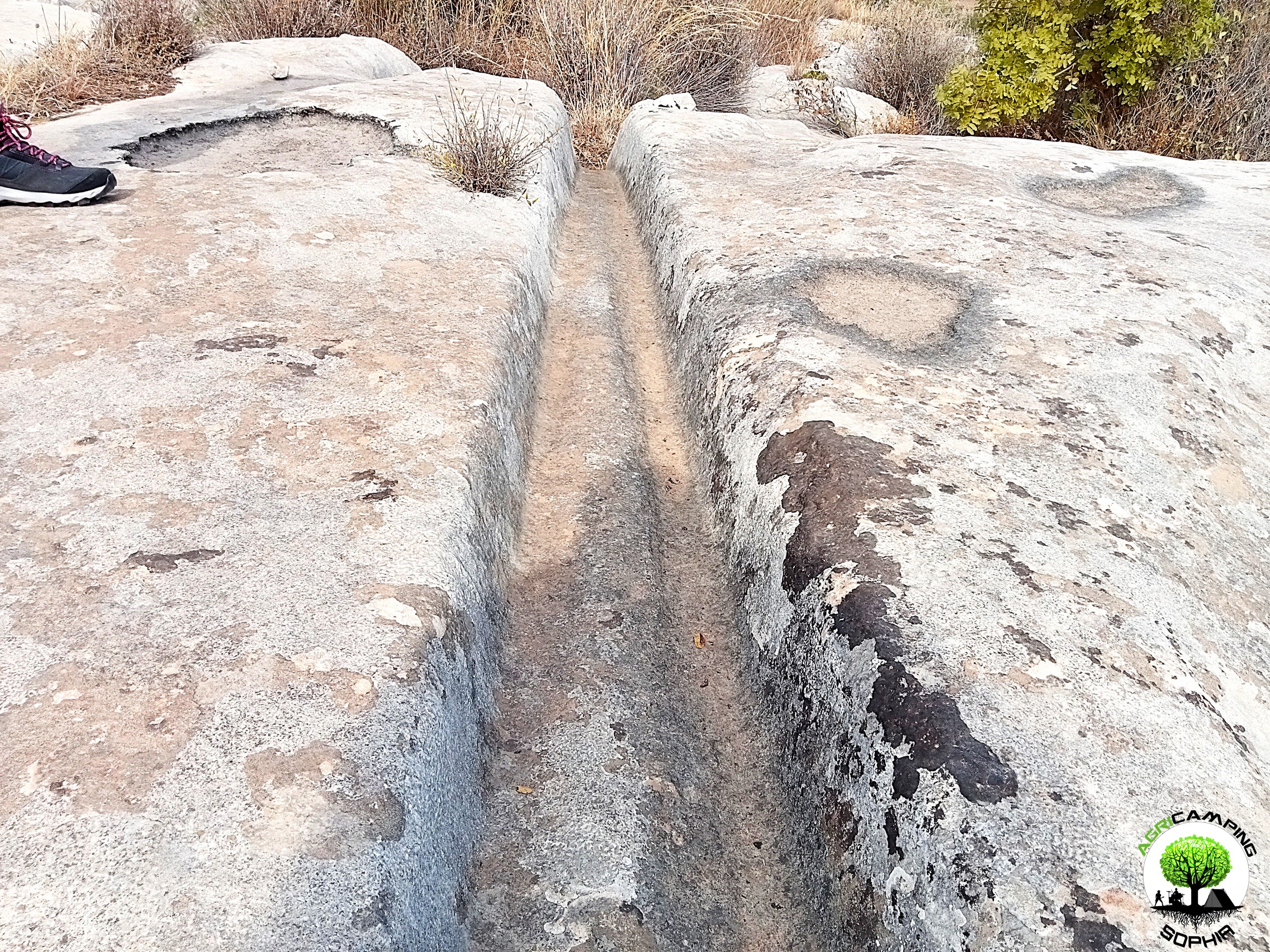 THE POLISHING OF THE CART RUTS
THE POLISHING OF THE CART RUTS
Read also THE PROBLEMATIC EDGES OF THE CART RUTS
I will skip any preamble, referring to to what has already been written regarding the presence of cart ruts in south-eastern Sicily.
To proceed with this comparison I have chosen a probable capital and the corner of a recess present in a block of the northern walls of Eloro that would seem to resemble a pinax, that is, a niche that would have housed a fresco of the heroa, but which a more careful observation refers to a system functional to the grip of the block through a pincer winch. Both elements, like the curt ruts, have remained at the mercy of the elements for millennia, and are therefore subject to comparable wear and tear due to the passage of time. The finishing of the capital should be of a high standard, since it is an architectural element that also has an aesthetic function. The recess, on the other hand, should have...
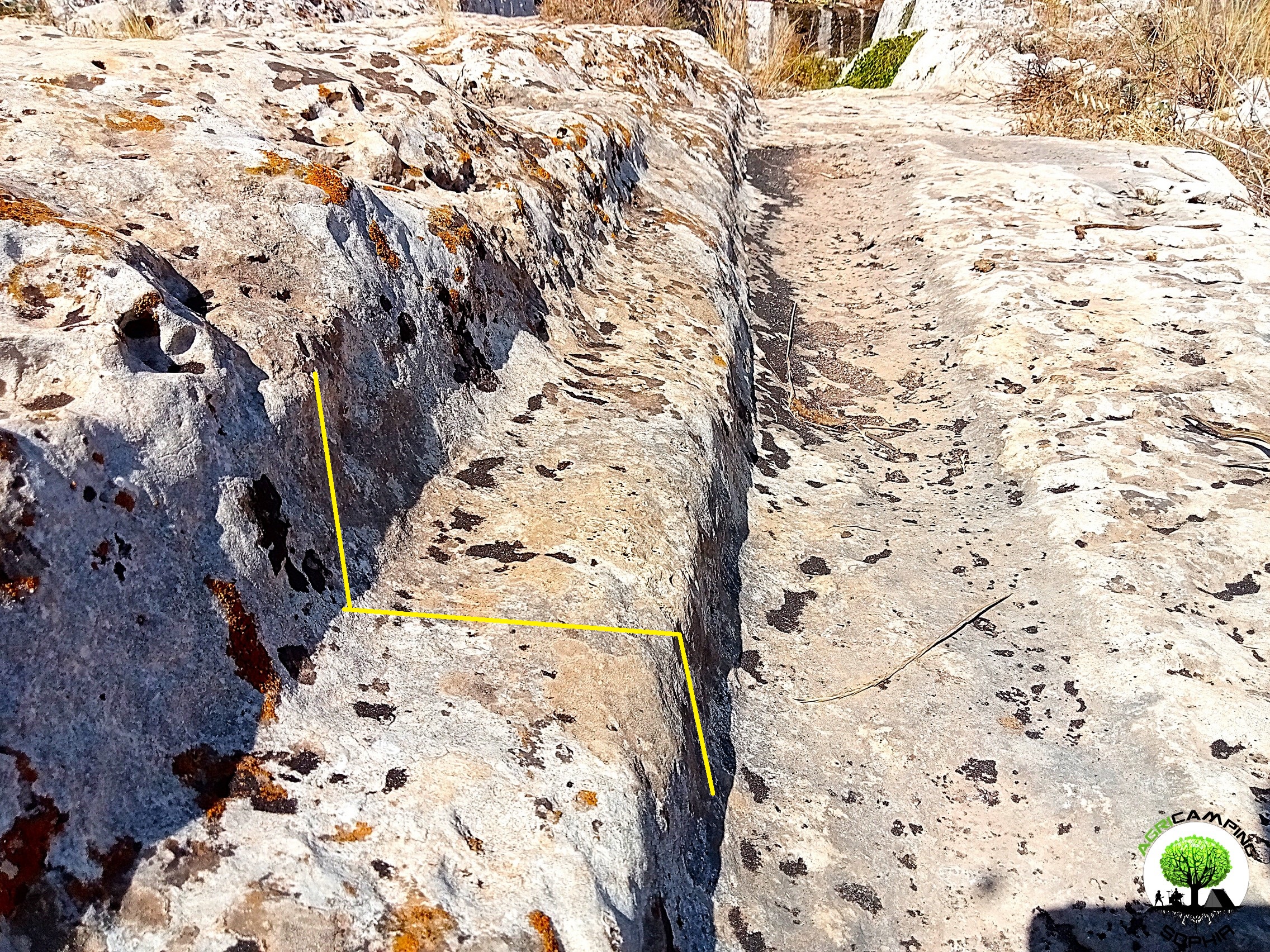 THE PROBLEMATIC EDGES OF THE CART RUTS
THE PROBLEMATIC EDGES OF THE CART RUTS
I will skip any preamble, referring to to what has already been written regarding the presence of cart ruts in south-eastern Sicily.As can be seen in other sites around the world, in some cart ruts I visited, in particular in the Cugni district in Pachino, in the Granati Vecchi district in Rosolini and in the Targia district in Syracuse, a clear border can be seen, a sort of frame, next to the grooves, more marked externally, barely noticeable internally.
The borders I measured have a width of 14-20 centimeters and a height of 8-10 centimeters.
Not all cart ruts have such frames present or particularly evident, regardless of the degree of wear or degradation. They are found above all in cart ruts with less deep grooves.
As already described in detail, given the presence of furrows with a depth of even 65-70 centimeters, the wheels of a possible vehicle would have had to have a...
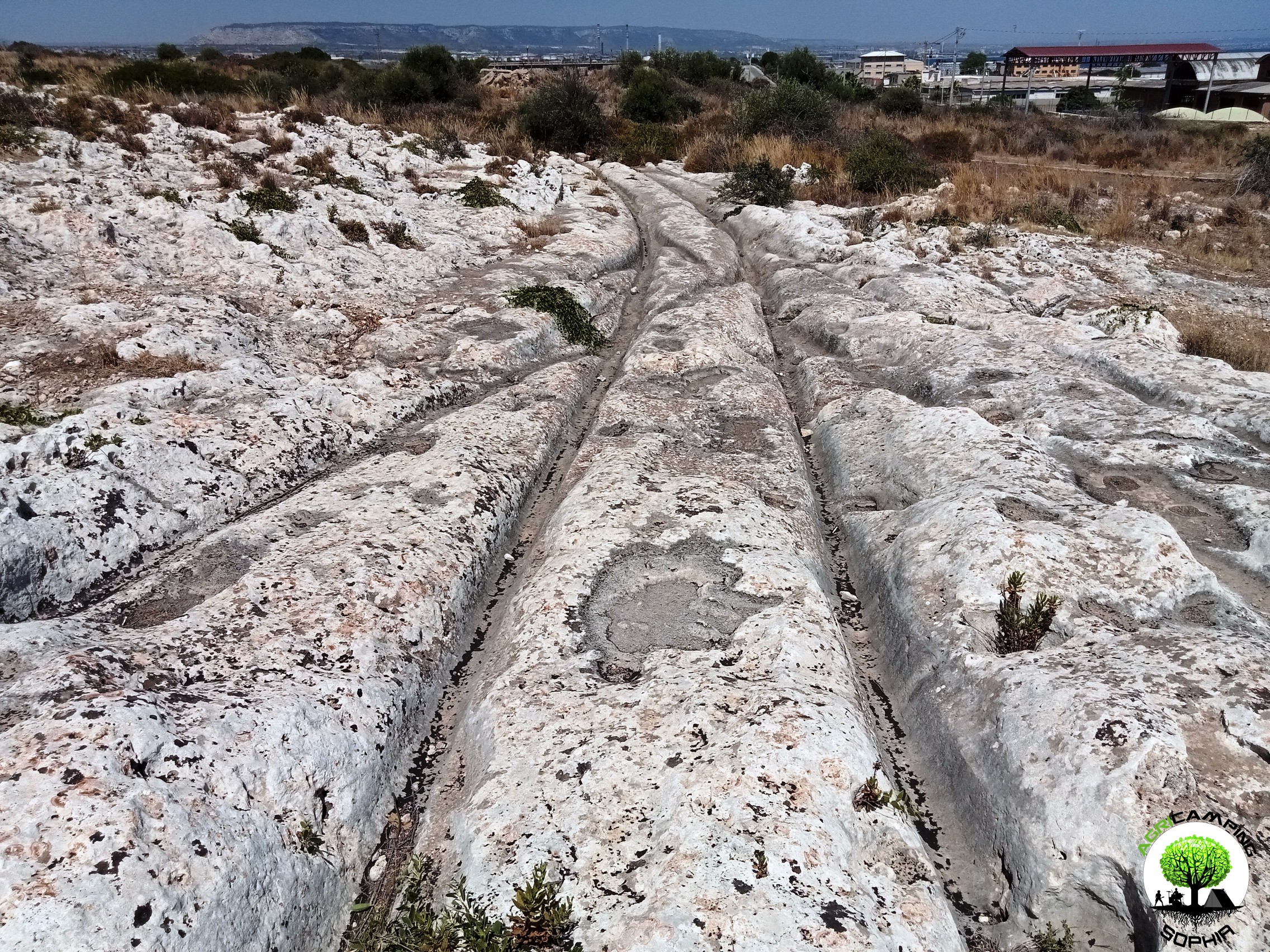 THE PROBLEM OF CART RUTS IN SOUTH-EASTERN SICILY (PART FOUR)
THE PROBLEM OF CART RUTS IN SOUTH-EASTERN SICILY (PART FOUR)
Click here to return to third part
Clapham Junction
As in the Maltese site Misrah Ghar Il-Kbir, also in the Targia and Granatari Vecchi districts the cart ruts intersect and cross each other in a similar way to the track switches in a railway station. The nickname Clapham Junction that was given by David H. Trump to the Maltese site, derives precisely from the similarity with the famous English railway station. For Sagona these are agricultural furrows and water channels, for Mottershead, Pearson and Schaefer these are abandoned paths due to obstacles and wear. Obviously we do not know what the morphology of the Syracuse and Rosolini territory was at times when the cart ruts were traced, but considering the current context, there certainly would have been no agricultural reason to build them, given the presence of fertile land, springs and fresh water courses just a few kilometers...






 DO YOU WANT TO ORGANIZE AN ERASMUS AT AGRICAMPING SOPHIA?
DO YOU WANT TO ORGANIZE AN ERASMUS AT AGRICAMPING SOPHIA? CART RUTS MODELED ON SOFT ROCK?
CART RUTS MODELED ON SOFT ROCK? RACK OR HOUSING FOR CLOGS?
RACK OR HOUSING FOR CLOGS? CART RUTS CUT FROM QUARRIES
CART RUTS CUT FROM QUARRIES CART RUTS AND A FEW TOO MANY PROJECTIONS
CART RUTS AND A FEW TOO MANY PROJECTIONS THE POLISHING OF THE CART RUTS
THE POLISHING OF THE CART RUTS THE PROBLEMATIC EDGES OF THE CART RUTS
THE PROBLEMATIC EDGES OF THE CART RUTS THE PROBLEM OF CART RUTS IN SOUTH-EASTERN SICILY (PART FOUR)
THE PROBLEM OF CART RUTS IN SOUTH-EASTERN SICILY (PART FOUR)